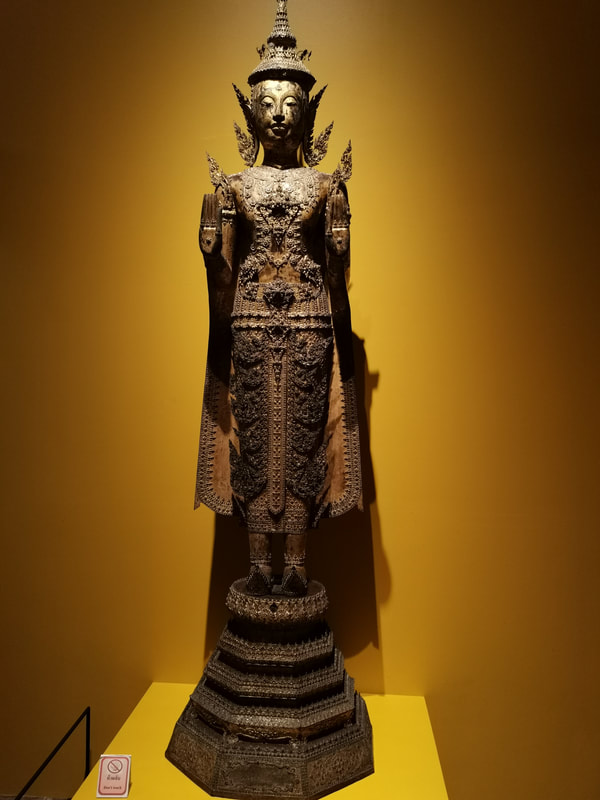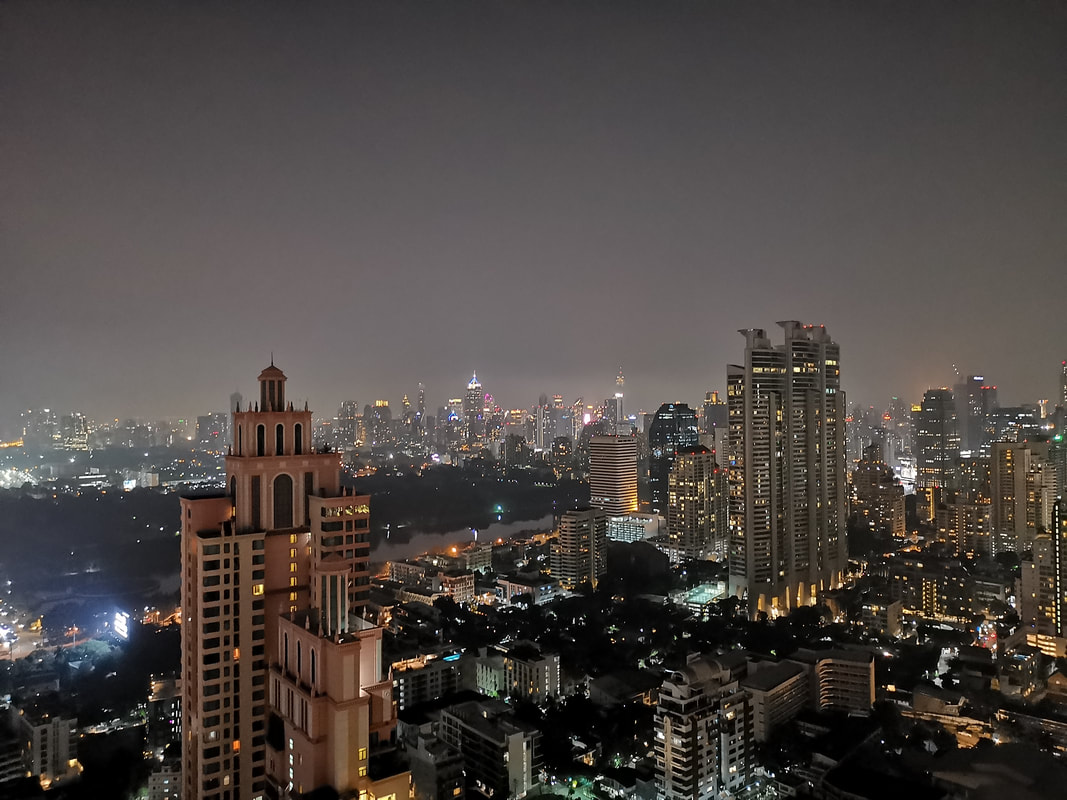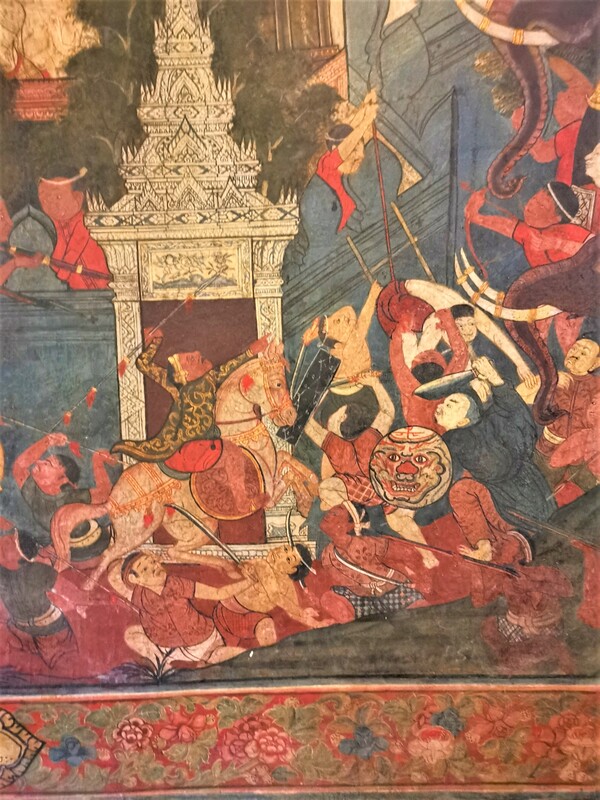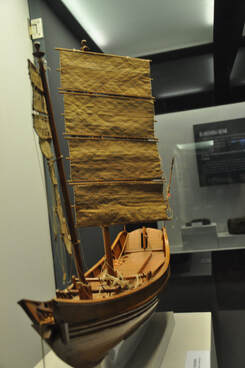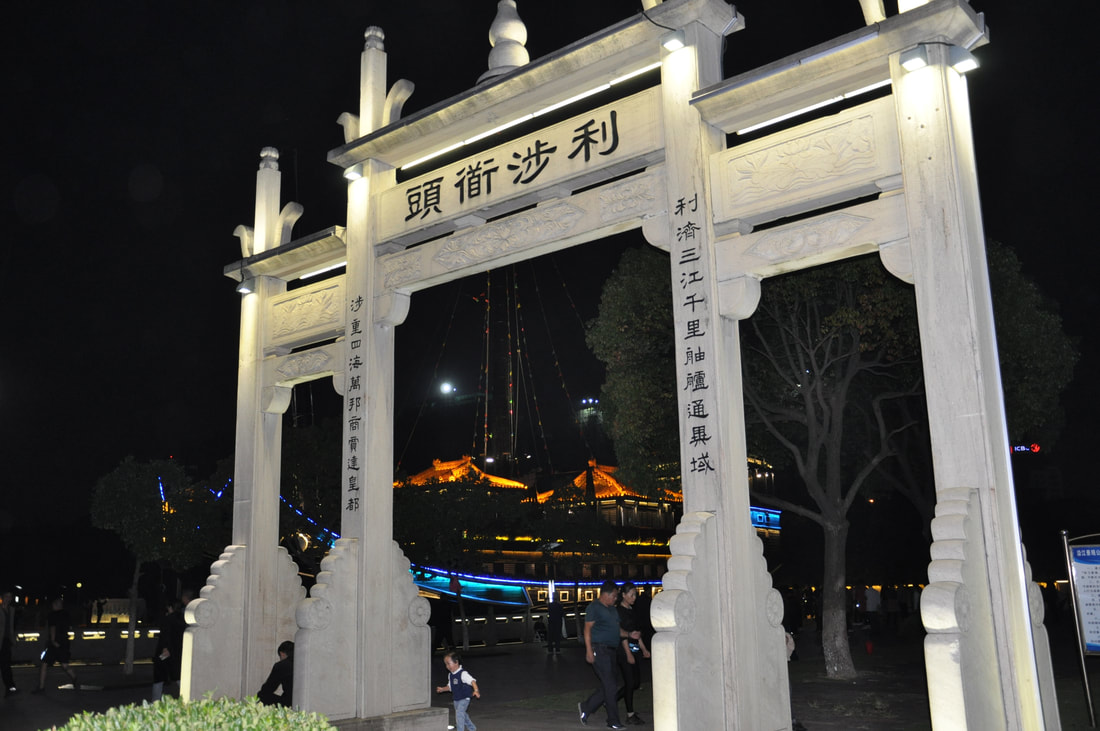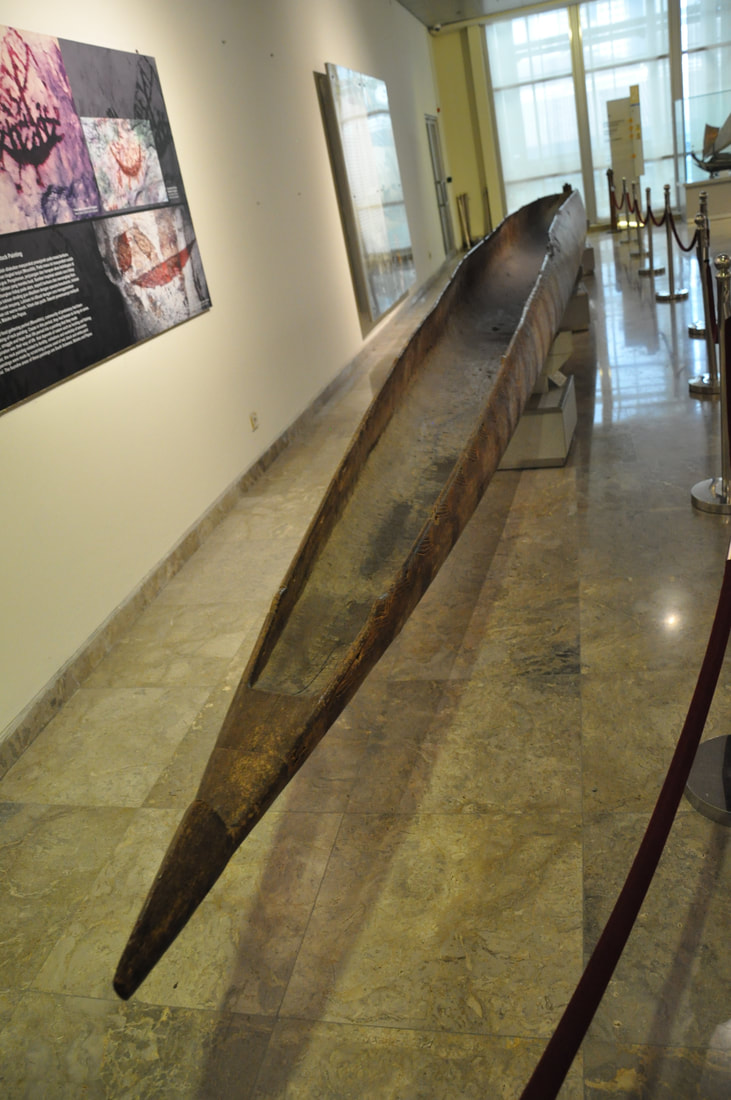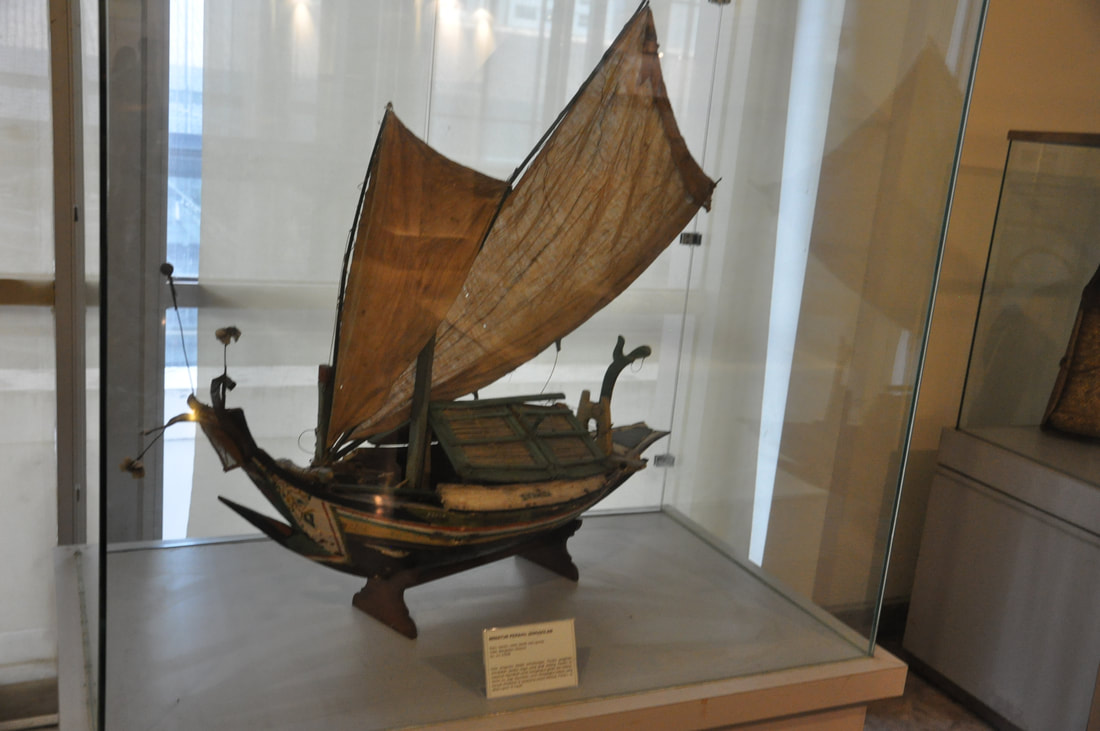Above photo by Hasmik Ghazaryan Olson, photo taken at Phi Phi Islands, Krabi, Thailand.
Downloaded from: https://unsplash.com/photos/yaD-gMS2E20
Downloaded from: https://unsplash.com/photos/yaD-gMS2E20
Bibliography of South East Asia's
Maritime Silk Road Research
And research resource directory
Thailand
The following references are from a variety of sources.
References from UNESCO https://en.unesco.org/silkroad/countries-alongside-silk-road-routes/thailand do not use standard citation formats.
References from UNESCO https://en.unesco.org/silkroad/countries-alongside-silk-road-routes/thailand do not use standard citation formats.
Citation formats vary greatly in this first draft bibliography.
Hayes, S., Shoocongdej, R., Pureepatpong, N., Sangvichien, S., & Chintakanon, K. (2017). A Late Pleistocene woman from Tham Lod, Thailand: The influence of today on a face from the past. Antiquity, 91(356), 289-303. doi:10.15184/aqy.2017.18
Joyce C. White, Elizabeth G. Hamilton, The metal age of Thailand and Ricardo's Law of Comparative Advantage, Archaeological Research in Asia, Volume 27, 2021, 100305,
Abstract: After several decades of archaeologists interpreting Thailand's metal age development using top-down approaches drawn from 1980s archaeological theory, it has become evident they do not work for this region. When the metal assemblages from Ban Chiang and related sites in northeast Thailand were studied with a systematic methodology, alternative perspectives emerged for how to better interpret the resilient, peaceful prehistoric societies dating from approximately 2100 BCE – 300 CE. A testable model is proposed applying “Ricardo's Law of Comparative Advantage” that focuses on “regional exchange systems.” Exchange networks existed in the middle Mekong and Chao Phraya basins from the pre-metal period through the metal age and underpinned heterarchical political and economic systems whereby goods and valuables were exchanged among decentralized networks of communities.
CONCLUSIONS
Stech and Maddin challenged archaeologists working in Southeast Asia to develop models for the region’s distinctive development of metal technologies that highlight the area’s rich and dispersed metal resources. Our study has developed such a model, one that can be tested and elaborated upon by up-and-coming generations of archaeologists. In order to further develop this model, our study provides a methodological template for how to study archaeometallurgical assemblages excavated from the region’s prehistoric sites.
Keywords: Archaeometallurgy; Ban Chiang; Community specialization; Ricardo's Law of Comparative Advantage; Craft production and exchange; Heterarchy; Middle-range societies
ISSN 2352-2267, https://doi.org/10.1016/j.ara.2021.100305. https://www.sciencedirect.com/science/article/pii/S2352226721000519
https://reader.elsevier.com/reader/sd/pii/S2352226721000519?token=EE83A9835A9EEAD60077703EFE61AAFC847C7236F5A999C3784B521107FA3C5D2687C172EF499797FD4BED9B7E51E992&originRegion=us-east-1&originCreation=20211121103709
Lertrit, Sawang. “Cultural Resource Management and Archaeology at Chiang Saen, Northern Thailand.” Journal of Southeast Asian Studies, vol. 31, no. 1, [Cambridge University Press, Department of History, National University of Singapore], 2000, pp. 137–61, http://www.jstor.org/stable/20072204
Welch, D.J. Archaeology of Northeast Thailand in Relation to the Pre-Khmer and Khmer Historical Records. International Journal of Historical Archaeology 2, 205–233 (1998). https://doi.org/10.1023/A:1027320309113 https://www.researchgate.net/publication/225859803_Archaeology_of_Northeast_Thailand_in_Relation_to_the_Pre-Khmer_and_Khmer_Historical_Records_The_Transition_to_History_in_Southeast_Asia_Part_I_Cambodia_and_Thailand
Hayes, S., Shoocongdej, R., Pureepatpong, N., Sangvichien, S., & Chintakanon, K. (2017). A Late Pleistocene woman from Tham Lod, Thailand: The influence of today on a face from the past. Antiquity, 91(356), 289-303. doi:10.15184/aqy.2017.18
Joyce C. White, Elizabeth G. Hamilton, The metal age of Thailand and Ricardo's Law of Comparative Advantage, Archaeological Research in Asia, Volume 27, 2021, 100305,
Abstract: After several decades of archaeologists interpreting Thailand's metal age development using top-down approaches drawn from 1980s archaeological theory, it has become evident they do not work for this region. When the metal assemblages from Ban Chiang and related sites in northeast Thailand were studied with a systematic methodology, alternative perspectives emerged for how to better interpret the resilient, peaceful prehistoric societies dating from approximately 2100 BCE – 300 CE. A testable model is proposed applying “Ricardo's Law of Comparative Advantage” that focuses on “regional exchange systems.” Exchange networks existed in the middle Mekong and Chao Phraya basins from the pre-metal period through the metal age and underpinned heterarchical political and economic systems whereby goods and valuables were exchanged among decentralized networks of communities.
CONCLUSIONS
Stech and Maddin challenged archaeologists working in Southeast Asia to develop models for the region’s distinctive development of metal technologies that highlight the area’s rich and dispersed metal resources. Our study has developed such a model, one that can be tested and elaborated upon by up-and-coming generations of archaeologists. In order to further develop this model, our study provides a methodological template for how to study archaeometallurgical assemblages excavated from the region’s prehistoric sites.
Keywords: Archaeometallurgy; Ban Chiang; Community specialization; Ricardo's Law of Comparative Advantage; Craft production and exchange; Heterarchy; Middle-range societies
ISSN 2352-2267, https://doi.org/10.1016/j.ara.2021.100305. https://www.sciencedirect.com/science/article/pii/S2352226721000519
https://reader.elsevier.com/reader/sd/pii/S2352226721000519?token=EE83A9835A9EEAD60077703EFE61AAFC847C7236F5A999C3784B521107FA3C5D2687C172EF499797FD4BED9B7E51E992&originRegion=us-east-1&originCreation=20211121103709
Lertrit, Sawang. “Cultural Resource Management and Archaeology at Chiang Saen, Northern Thailand.” Journal of Southeast Asian Studies, vol. 31, no. 1, [Cambridge University Press, Department of History, National University of Singapore], 2000, pp. 137–61, http://www.jstor.org/stable/20072204
Welch, D.J. Archaeology of Northeast Thailand in Relation to the Pre-Khmer and Khmer Historical Records. International Journal of Historical Archaeology 2, 205–233 (1998). https://doi.org/10.1023/A:1027320309113 https://www.researchgate.net/publication/225859803_Archaeology_of_Northeast_Thailand_in_Relation_to_the_Pre-Khmer_and_Khmer_Historical_Records_The_Transition_to_History_in_Southeast_Asia_Part_I_Cambodia_and_Thailand
Most of the following are from the UNESCO internet site.
Ancient trading centres in the Malay Peninsula by Leong Sau Heng https://en.unesco.org/silkroad/knowledge-bank/ancient-trading-centres-malay-peninsula
Ayudhya: Capital-port of Siam and its “Chinese-connection” in the 14th and 15th centuries, by Charnvit Kasetsiri https://en.unesco.org/silkroad/knowledge-bank/ayudhya-capital-port-siam-and-its-chinese-connection-14th-and-15th-centuries
Charnvit Kasetsiri born May 6, 1941 is a Thai historian. He is a professor emeritus of the Thammasat University and was its rector in 1994–1995.
Ayutthaya as a cosmopolitan society: a case study of Daniel Brochebourde and his descendants, by Dhiravat na Pombejra https://en.unesco.org/silkroad/knowledge-bank/ayutthaya-cosmopolitan-society-case-study-daniel-brochebourde-and-his-descendants
Changing Patterns of Trade by Struan Reid https://en.unesco.org/silkroad/knowledge-bank/changing-patterns-trade
China’s overseas communications with Southeast Asia as reflected In Chinese epigraphic materials: 1264-1800 by Wolfgang Franke https://en.unesco.org/silkroad/knowledge-bank/chinas-overseas-communications-southeast-asia-reflected-chinese-epigraphic-materials
Early Trans-Oceanic Trade In South and Southeast Asia by Dr. Himanshu Prabha Ray (Jawaharlal Nehru University, India) https://en.unesco.org/silkroad/knowledge-bank/early-trans-oceanic-trade-south-and-southeast-asia
Historic City of Ayutthaya (No author listed) http://whc.unesco.org/en/list/576
Music in Persian and Thai courts in the early Ayutthaya period by Udom Arunrattana https://en.unesco.org/silkroad/knowledge-bank/music-persian-and-thai-courts-early-ayutthaya-period
Maritime Trade during the 14th and the 17th Century: Evidence from the Underwater Archaeological Sites In the Gulf of Siam, Mr. Sayan Prichanchit https://en.unesco.org/silkroad/knowledge-bank/maritime-trade-during-14th-and-17th-century-evidence-underwater-archaeological-sites
Phra Prathom Chedi, by Supachai Naktong https://en.unesco.org/silkroad/knowledge-bank/phra-prathom-chedi
Port and polity of the Malay Peninsula and Sumatra (5th – 14th centuries AD) Nik Hassan Shuhaimi and Nik Abd Rahman https://en.unesco.org/silkroad/knowledge-bank/port-and-polity-malay-peninsula-and-sumatra-5th-14th-centuries-ad
Study on junk-trade ceramics during 13th 16th Century AD salvaged from the Gulf of Thailand, by Sayan Prishanchit https://en.unesco.org/silkroad/knowledge-bank/study-junk-trade-ceramics-during-13th-16th-century-ad-salvaged-gulf-thailand
The Trade Route and the Diffusion of Artistic Traditions In South and Southeast Asia by J.G. de Casparis https://en.unesco.org/silkroad/knowledge-bank/expansion-buddhism-south-east-asia
The Southern Silk Road, by I. C. Glover https://en.unesco.org/silkroad/knowledge-bank/southern-silk-road
The Trade in Spices by Struan Reid https://en.unesco.org/silkroad/knowledge-bank/trade-spices
The Trade Route and the Diffusion of Artistic Traditions In South and Southeast Asia, by Dr. Nandana Chutiwongs https://en.unesco.org/silkroad/knowledge-bank/trade-route-and-diffusion-artistic-traditions-south-and-southeast-asia
Ancient trading centres in the Malay Peninsula by Leong Sau Heng https://en.unesco.org/silkroad/knowledge-bank/ancient-trading-centres-malay-peninsula
Ayudhya: Capital-port of Siam and its “Chinese-connection” in the 14th and 15th centuries, by Charnvit Kasetsiri https://en.unesco.org/silkroad/knowledge-bank/ayudhya-capital-port-siam-and-its-chinese-connection-14th-and-15th-centuries
Charnvit Kasetsiri born May 6, 1941 is a Thai historian. He is a professor emeritus of the Thammasat University and was its rector in 1994–1995.
Ayutthaya as a cosmopolitan society: a case study of Daniel Brochebourde and his descendants, by Dhiravat na Pombejra https://en.unesco.org/silkroad/knowledge-bank/ayutthaya-cosmopolitan-society-case-study-daniel-brochebourde-and-his-descendants
Changing Patterns of Trade by Struan Reid https://en.unesco.org/silkroad/knowledge-bank/changing-patterns-trade
China’s overseas communications with Southeast Asia as reflected In Chinese epigraphic materials: 1264-1800 by Wolfgang Franke https://en.unesco.org/silkroad/knowledge-bank/chinas-overseas-communications-southeast-asia-reflected-chinese-epigraphic-materials
Early Trans-Oceanic Trade In South and Southeast Asia by Dr. Himanshu Prabha Ray (Jawaharlal Nehru University, India) https://en.unesco.org/silkroad/knowledge-bank/early-trans-oceanic-trade-south-and-southeast-asia
Historic City of Ayutthaya (No author listed) http://whc.unesco.org/en/list/576
Music in Persian and Thai courts in the early Ayutthaya period by Udom Arunrattana https://en.unesco.org/silkroad/knowledge-bank/music-persian-and-thai-courts-early-ayutthaya-period
Maritime Trade during the 14th and the 17th Century: Evidence from the Underwater Archaeological Sites In the Gulf of Siam, Mr. Sayan Prichanchit https://en.unesco.org/silkroad/knowledge-bank/maritime-trade-during-14th-and-17th-century-evidence-underwater-archaeological-sites
Phra Prathom Chedi, by Supachai Naktong https://en.unesco.org/silkroad/knowledge-bank/phra-prathom-chedi
Port and polity of the Malay Peninsula and Sumatra (5th – 14th centuries AD) Nik Hassan Shuhaimi and Nik Abd Rahman https://en.unesco.org/silkroad/knowledge-bank/port-and-polity-malay-peninsula-and-sumatra-5th-14th-centuries-ad
Study on junk-trade ceramics during 13th 16th Century AD salvaged from the Gulf of Thailand, by Sayan Prishanchit https://en.unesco.org/silkroad/knowledge-bank/study-junk-trade-ceramics-during-13th-16th-century-ad-salvaged-gulf-thailand
The Trade Route and the Diffusion of Artistic Traditions In South and Southeast Asia by J.G. de Casparis https://en.unesco.org/silkroad/knowledge-bank/expansion-buddhism-south-east-asia
The Southern Silk Road, by I. C. Glover https://en.unesco.org/silkroad/knowledge-bank/southern-silk-road
The Trade in Spices by Struan Reid https://en.unesco.org/silkroad/knowledge-bank/trade-spices
The Trade Route and the Diffusion of Artistic Traditions In South and Southeast Asia, by Dr. Nandana Chutiwongs https://en.unesco.org/silkroad/knowledge-bank/trade-route-and-diffusion-artistic-traditions-south-and-southeast-asia
Below are some downloads - not for commercial use.
| ayutthaya_as_a_cosmopolitan_society._a_case_study_of_daniel_brochebourde_and_his_descendants.pdf | |
| File Size: | 101 kb |
| File Type: | |
| bengal_and_southeast_asia_trade_and_cultural_contacts_in_ancient_period_chowdury.pdf | |
| File Size: | 329 kb |
| File Type: | |
| the_trade_route_and_the_diffusion_of_artistic_traditions_in_south_and_southeast_asia.pdf | |
| File Size: | 157 kb |
| File Type: | |
| trans-oceanic_trade_in_early_south_and_south_east_asia.pdf | |
| File Size: | 169 kb |
| File Type: | |
The reader of this page is invited to do an online search for:
Ancient Maritime Cross-Cultural Exchanges - Archeological Research in Thailand
A collection of research articles produced by The Fine Arts Department, Ministry of Culture, (Thailand) 2019.
(I found a downloadable copy, read it with great appreciation, and have written to the Fine Arts Department asking permission to re-post it here.)
Ancient Maritime Cross-Cultural Exchanges - Archeological Research in Thailand
A collection of research articles produced by The Fine Arts Department, Ministry of Culture, (Thailand) 2019.
(I found a downloadable copy, read it with great appreciation, and have written to the Fine Arts Department asking permission to re-post it here.)
Also see:
The Oldest Cities in Thailand: An Archaeological Travel Guide
https://pathsunwritten.com/thailand-oldest-city/#What_Is_There_to_See_in_Nakhon_Pathom
The Oldest Cities in Thailand: An Archaeological Travel Guide
https://pathsunwritten.com/thailand-oldest-city/#What_Is_There_to_See_in_Nakhon_Pathom
The university in Thailand that appears most involved in the study of ancient Thailand and its trading relationships with the ancient Silk Roads is:
Slipakorn University, Department of Archeology, https://archae.su.ac.th/en/doc_group/research-en
Slipakorn University, Department of Archeology, https://archae.su.ac.th/en/doc_group/research-en
Another research bibliography of Thai archeological research can be found here:
https://so01.tci-thaijo.org/index.php/damrong/issue/view/2447
The articles are in Thai, but titles and Abstracts are in English
https://so01.tci-thaijo.org/index.php/damrong/issue/view/2447
The articles are in Thai, but titles and Abstracts are in English
China
Museum of the South China Sea [中国(海南)南海博物馆],
Underwater Archeology
Most people don’t know China is the world leader in underwater archeology. Though “archeology” may not sound so exciting to the regular person, this hobby and profession is sometimes also called: “treasure hunting” under the sea. Though some people are just after loot, in Hainan it’s a highly skilled science and personal gain is not the goal, but rather to discover the secrets of the ancient world and trade routes. The place to go in Hainan to discover this ancient world is the Museum of the South China Sea [中国(海南)南海博物馆], a massive complex in Qionghai, a city best known for hosting the annual Boao Forum for Asia. If the reader is a professional archeologist and certified diver, a great review of this time-traveling museum and the dauntless explorers that work there can be found here: https://www.theworldofchinese.com/2021/03/hainan-the-forefront-of-china-underwater-archeology/
Hong Kong Maritime Museum
The Hong Kong Maritime Museum is a non-profit educational institution funded by the international shipping community and the government in Hong Kong. It is located at Central Pier 8, Hong Kong. The museum was reopened to the public in February 2013.
Address: 11 Man Kwong St, Central, Hong Kong
Phone: +852 3713 2500
Established: 8 September 2005
https://www.hkmaritimemuseum.org
Address: 11 Man Kwong St, Central, Hong Kong
Phone: +852 3713 2500
Established: 8 September 2005
https://www.hkmaritimemuseum.org
The Maritime Silk Route Museum - Guangdong Province
The Maritime Silk Route Museum is the name of a museum on Hailing Island, Yangjiang, Guangdong Province, China. Work on the museum started in late 2004 and the museum opened to the public on 24 December 2009.
https://www.msrmuseum.com/Home/Enindex
https://www.msrmuseum.com/Home/Enindex
Maritime Museum - Macao
São Lourenço, Macau, China
Website (English): https://www.marine.gov.mo/subpage.aspx?a_id=1432277593#
São Lourenço, Macau, China
Website (English): https://www.marine.gov.mo/subpage.aspx?a_id=1432277593#
Ningbo Museum
|
Mingzhou was an international port in Southeast China during the Song Dynasty. As the only legal port for trade with Korea, it stood in high favor with the central government. In addition to the prosperous commercial enterprises, the port also played an important role in international cultural exchange including the transmission of Buddhist philosophies and culture. From: Sign posted in Ningbo Museum.
|
Malaysia
South China Sea Repository & Reference Centre (RRC)
Contact:
Institute of Oceanography and Environment (INOS), Universiti Malaysia Terengganu, 21030, Terengganu, Malaysia
Phone: +60 9-668 3747
https://rrc.umt.edu.my
Contact:
Institute of Oceanography and Environment (INOS), Universiti Malaysia Terengganu, 21030, Terengganu, Malaysia
Phone: +60 9-668 3747
https://rrc.umt.edu.my
Singapore
Philippines
The Boat People Museum
The Boat People Museum
Address: P76Q+WWM, Morong, Bataan, Philippines
Phone: +63 905 212 9844
Address: P76Q+WWM, Morong, Bataan, Philippines
Phone: +63 905 212 9844
